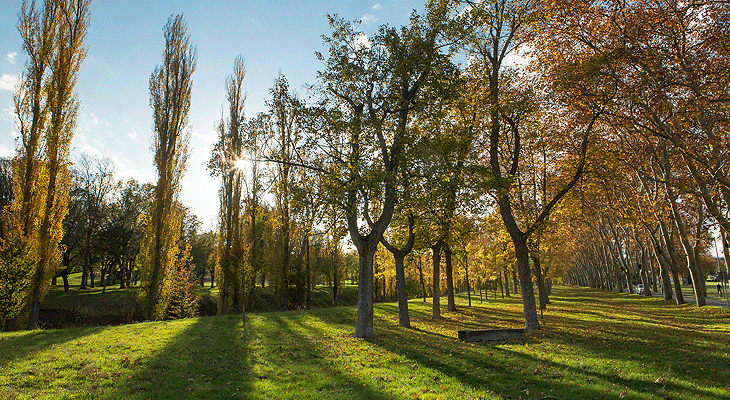En la imagen
El edificio Amigos, construido entre 2010 y 2012, modificó el paisaje del Campus.
REPORTAJE
21 | 09 | 2021
CAMPUS
Texto
Extraído del libro "El Campus de la Universidad de Navarra", coordinado por el profesor Carlos Soria y editado por EUNSA
FotoManuel Castells / Archivo fotográfico de la Universidad
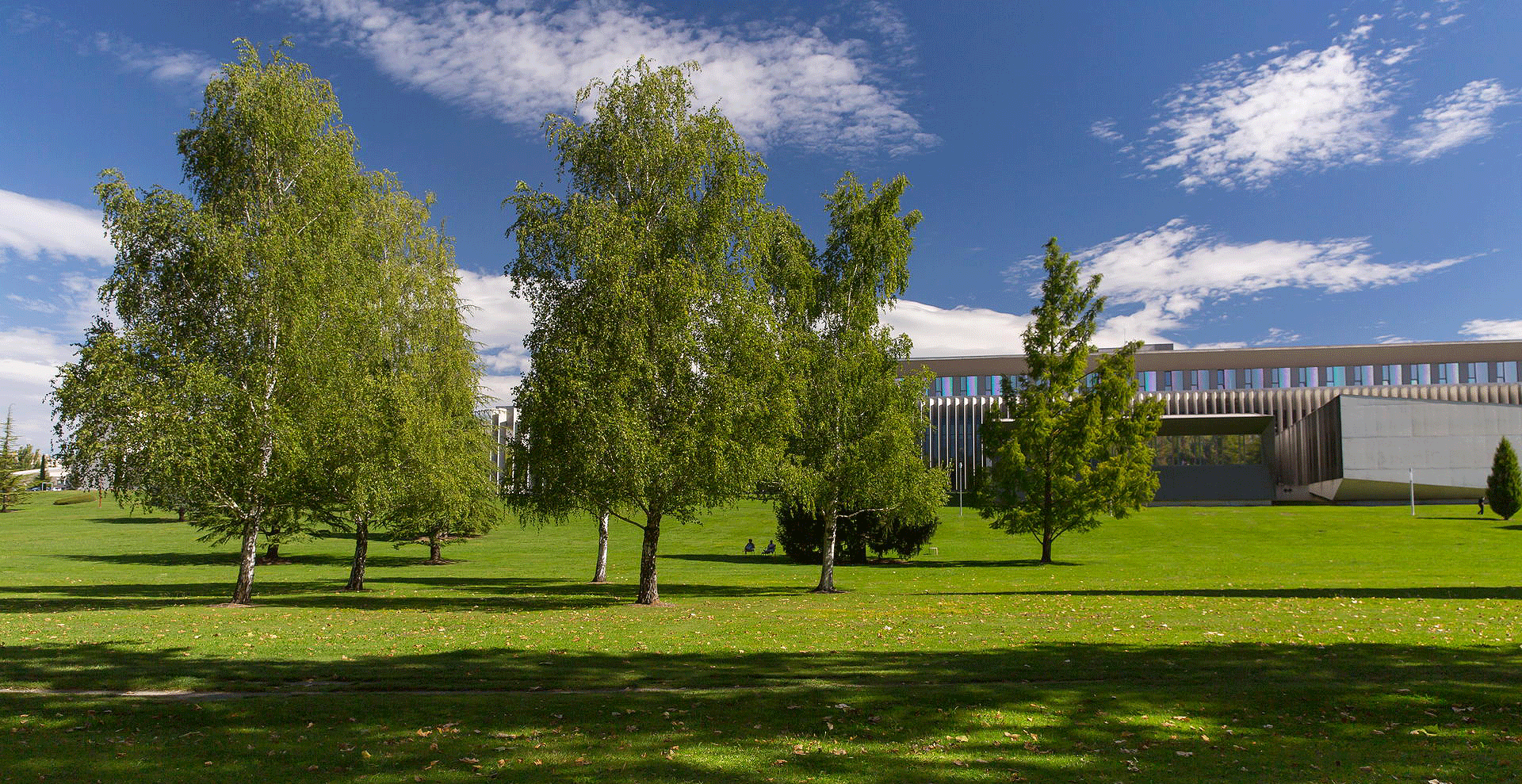
El edificio Amigos, construido entre 2010 y 2012, modificó el paisaje del Campus.
El Estudio General de Navarra fue fundado por san Josemaría Escrivá en 1952. Su primer curso, de Derecho, se inició con ocho profesores y cuarenta y cuatro alumnos. Y lo hizo en la antigua Cámara de Comptos Reales, un edificio del siglo XIV, de estilo gótico civil, cedido provisionalmente por la Diputación Foral de Navarra. Desde ese momento, los inicios de la Universidad estuvieron diseminados en varios edificios del centro de Pamplona.
Hasta que en 1960, con la transformación del Estudio General de Navarra en Universidad, el proyecto exigió dar con unos terrenos amplios que permitieran configurar, poco a poco, una auténtica ciudad universitaria. El Ayuntamiento de Pamplona (con Miguel Javier Urmeneta como nuevo alcalde) ofreció 130 hectáreas en el valle del río Sadar, límite sur del término municipal de Pamplona: el Consistorio poseía en la zona algunos terrenos (no muchos) y facilitaría la compraventa o expropiación del resto a favor de la Univerisdad de Navarra.
Así es como el Campus, en el valle del Sadar, inició su andadura ese mismo año de 1960.
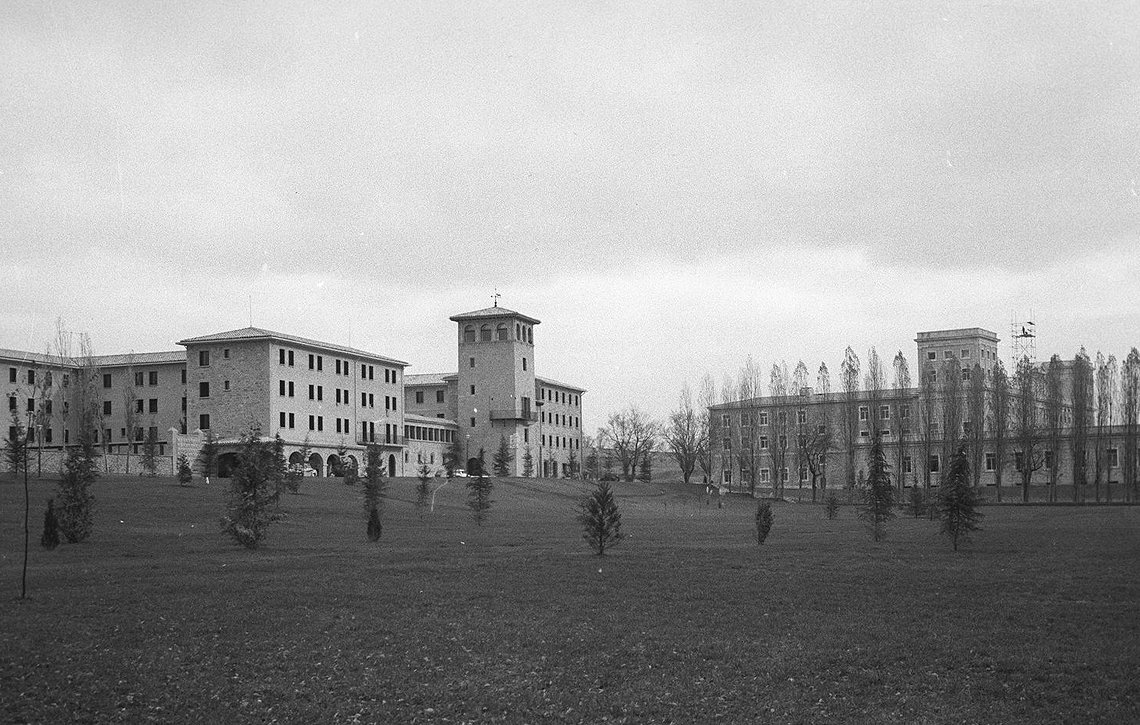
1964. Campa del Colegio Mayor Belagua recién sembrada y plantados los primeros árboles y arbustos del campus.
El paisaje del futuro Campus era, como el de la mayor parte de la Cuenca de Pamplona, de cultivo cerealista, algunos frutales, y un terreno intensamente parcelado. Había unos pocos caminos estrechos arbolados y destacaban los árboles del río, los que jalonan la carretera del Sadar y los chopos lombardos junto a la Fuente del Hierro. Además, variopintas edificaciones salpicaban esas 130 hectáreas (que acabaron siendo 113 con el paso del tiempo).
Para convertir esa tierra en un campus universitario, todo estaba por hacer.
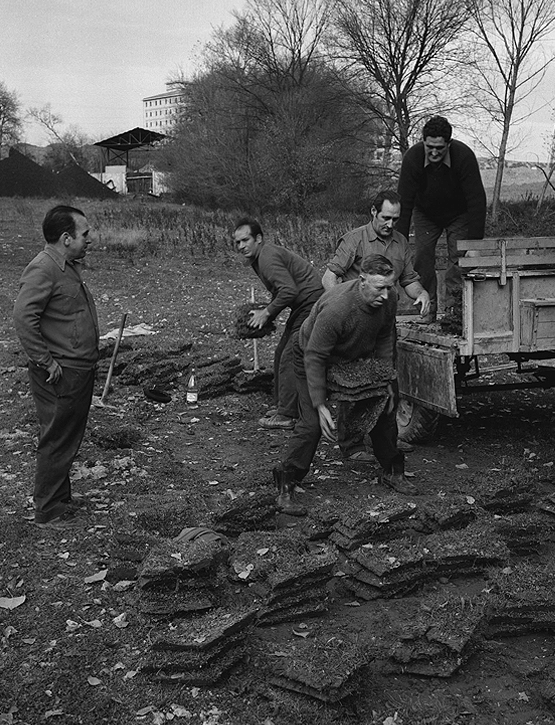
1974. Algunos de los jardineros que formaron el primer equipo: Francisco Villar, Nilo Lecumberri, Porfirio Leoz, Pascual Lecumberri y Luis Cano.
Desde el primer momento se buscaron soluciones austeras para mantener el campus. Céspedes y praderas resultaron las soluciones más baratas para conseguir un hermoso paisaje.
Se busco, intencionadamente, el orden, el equilibrio, la sobriedad y la simplicidad. Se respetó al máximo la morfología del terreno, dulcificando solo ligeramente sus pendientes; se privilegió la siembra y el cuidado de césped y praderas; y se abrieron los espacios, reforzando sutilmente la personalidad de algunos rincones. Se proyectó un campus que acompañase el ritmo y los acentos de las cuatro estaciones del año.
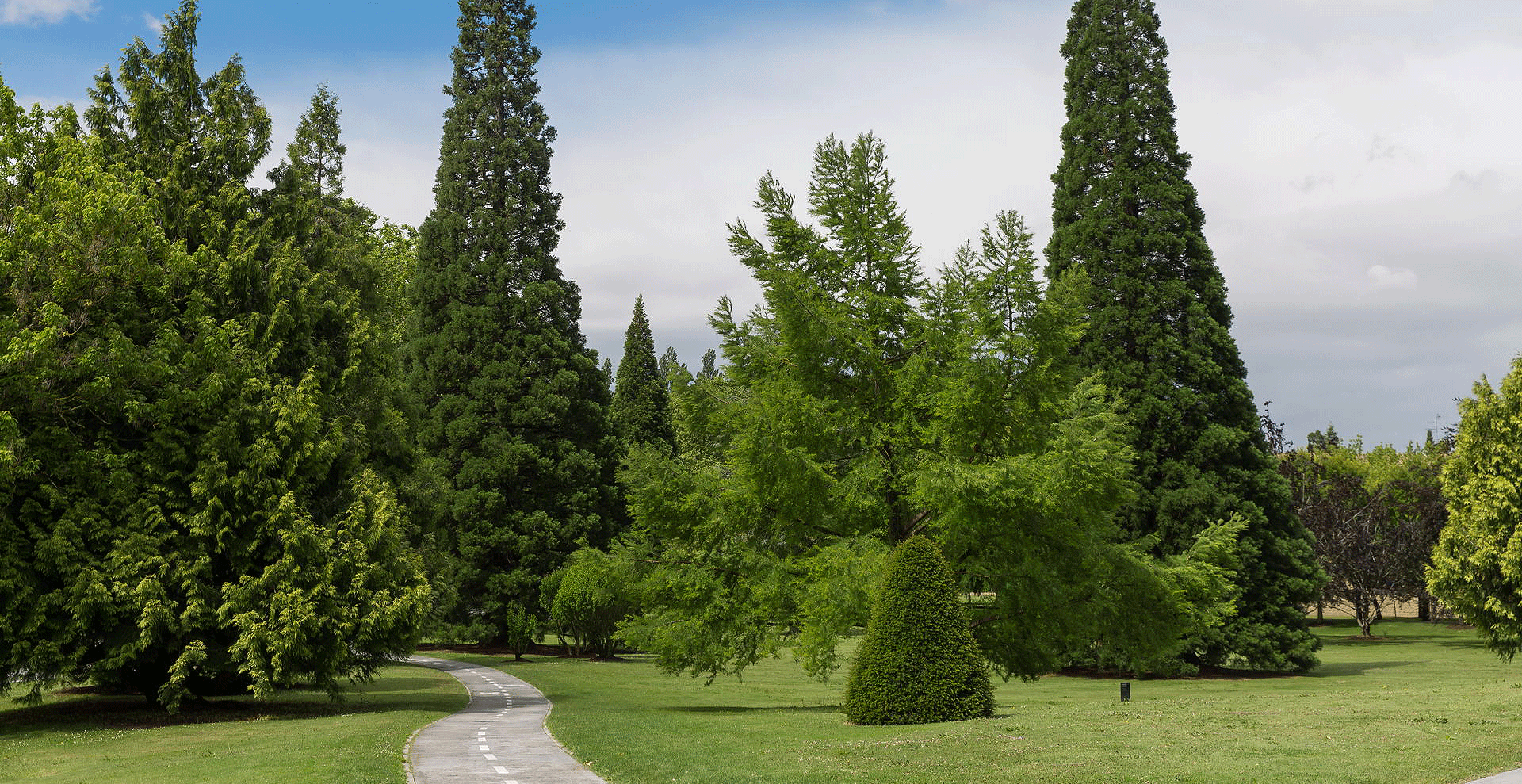
El Campus tiene pinsapos, abetos, araucarias, libocedros, cedros, chamaecyparis, criptomerias, cipreses, juníperos, piceas, pinos, secuoyas, tejos...
Acompañar a los profesionales y alumnos en invierno llevó a primar la plantación de coníferas (hoy son cerca de novecientas) para que sus hojas permanentes y la gama de sus verdes fuesen un contrapunto a la austeridad de la estación invernal.
Además, se buscó compensar la fuerte personalidad de las formas piramidales y afiladas de las coníferas, con las redondeadas o péndulas de otros árboles de hoja caduca. Los tonos verdes se completaron con árboles y arbustos de flor y con los tonos otoñales de tilos, arces, hayas, chopos o ginkgos.
La clave al diseñar el campus fue plantar árboles nobles, de crecimiento lento y buena madera, a la distancia requerida (sin dejarse intimidar por el efecto inicial de vacío); formar bosquetes de tres, cinco o siete ejemplares; y jugar con la personalidad de los ejemplares aislados.
Así, el campus se ha desarrollado poco a poco. Hoy, los edificios ocupan una superficie de 77.773m2. Una amplia extensión de campos de trigo se ha transformado en un campus universitario en el que crecen 4.200 árboles; entre ellos, un centenar de secuoyas.
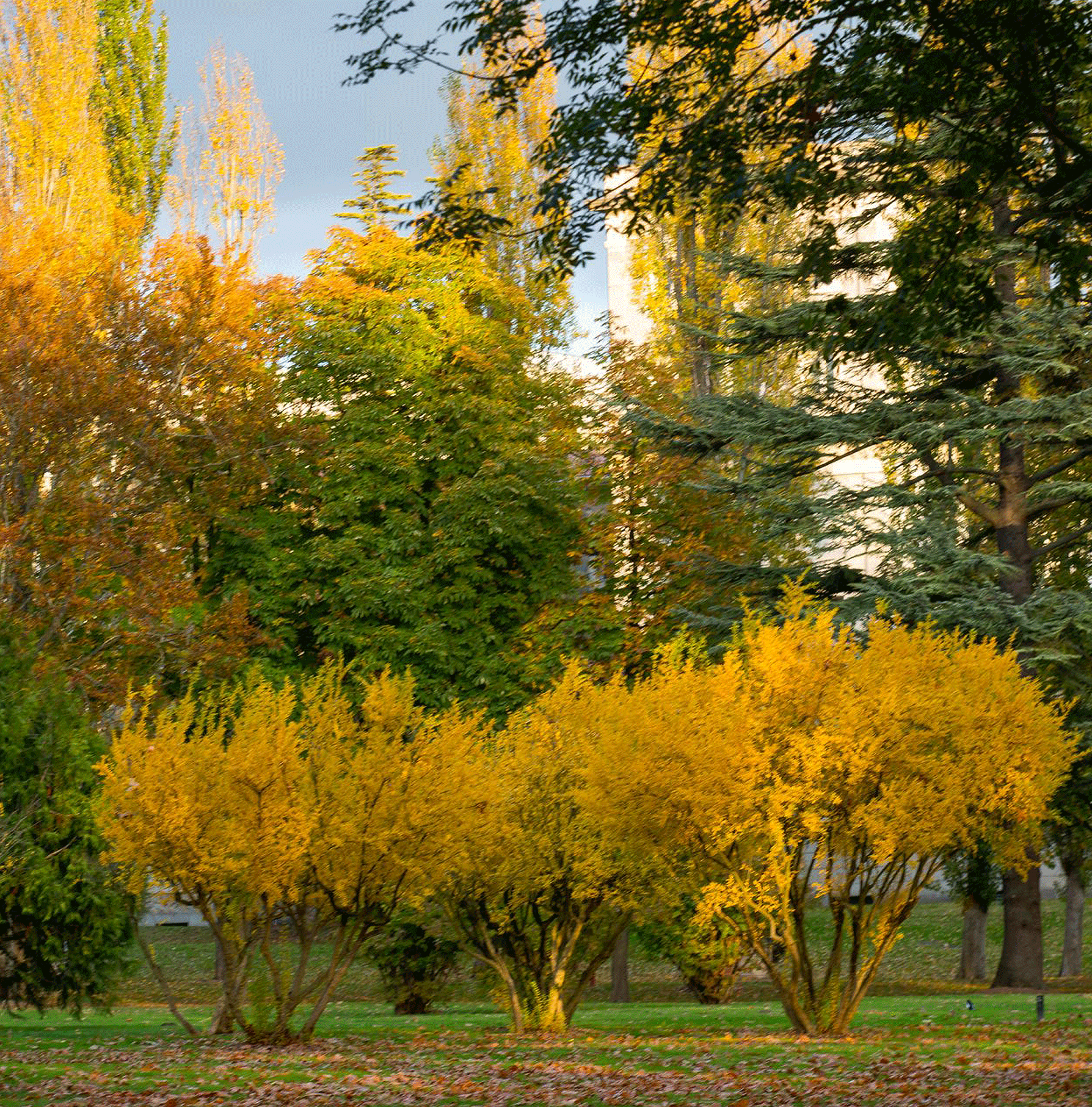
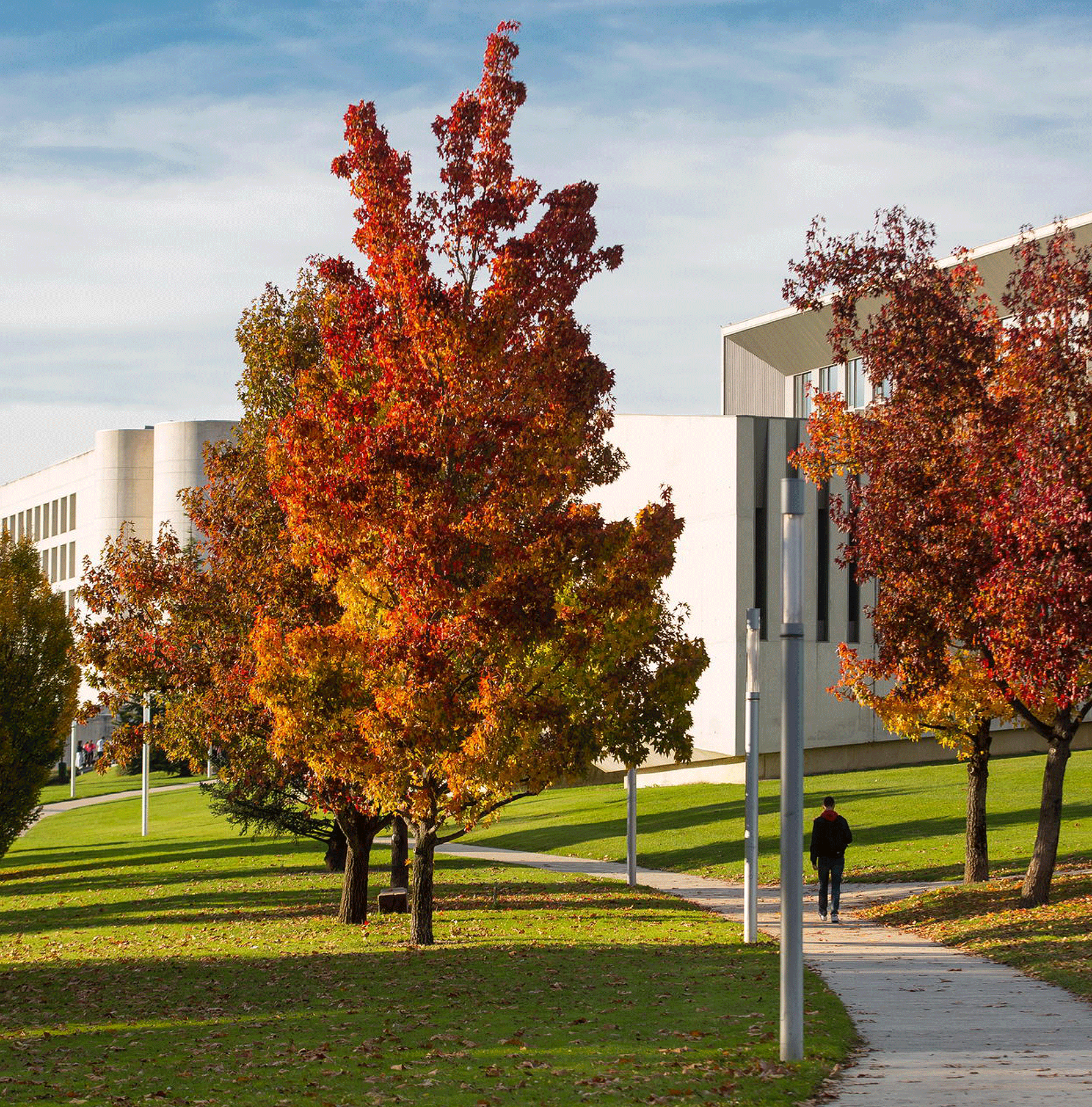
La gran diversidad de ambientes, recursos y refugios permiten la presencia de una notable variedad de animales, que en la actualidad suman 273 especies.
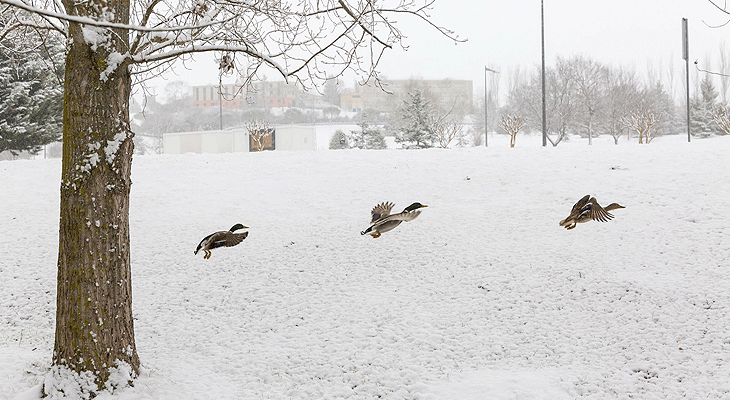
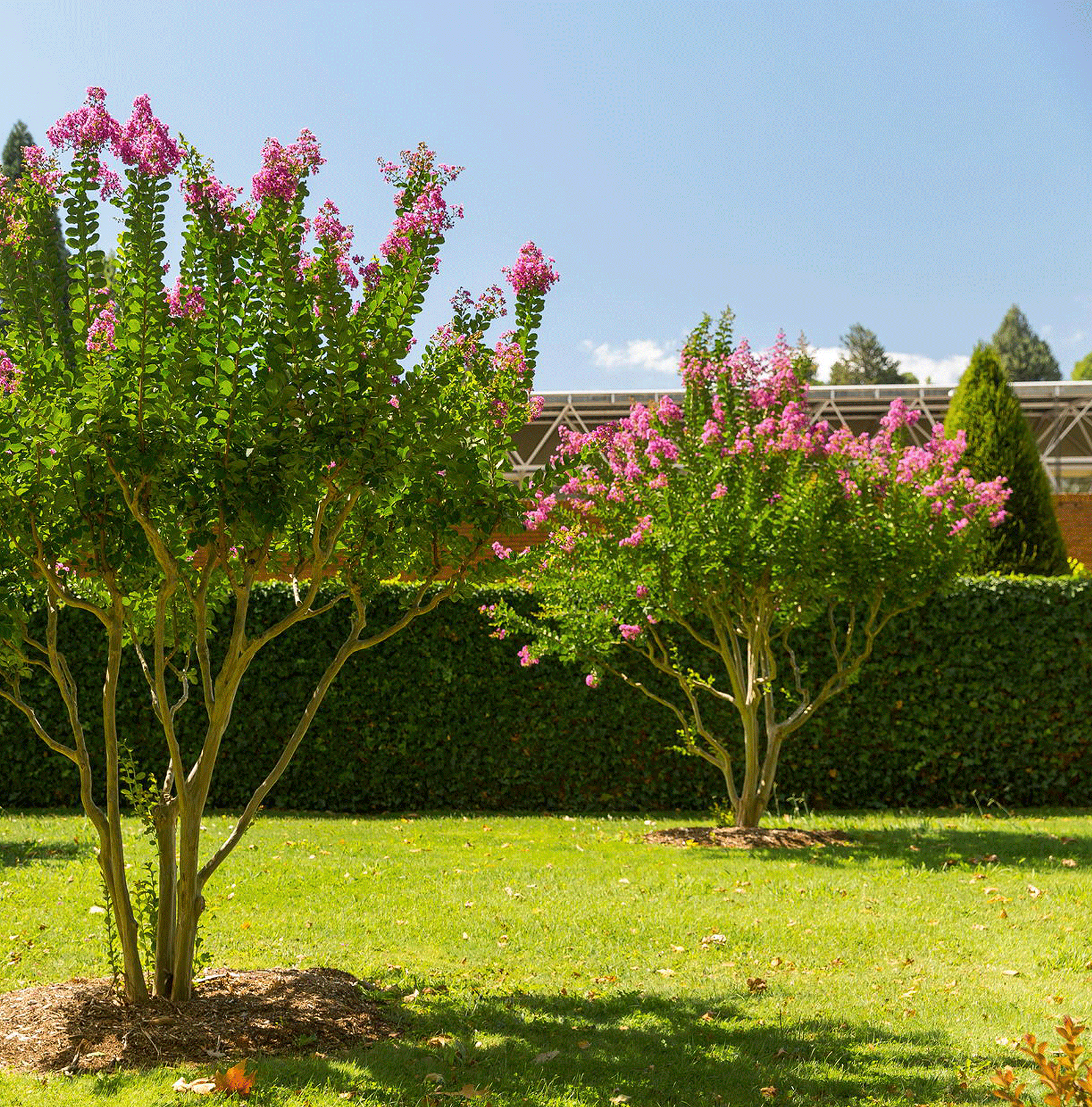
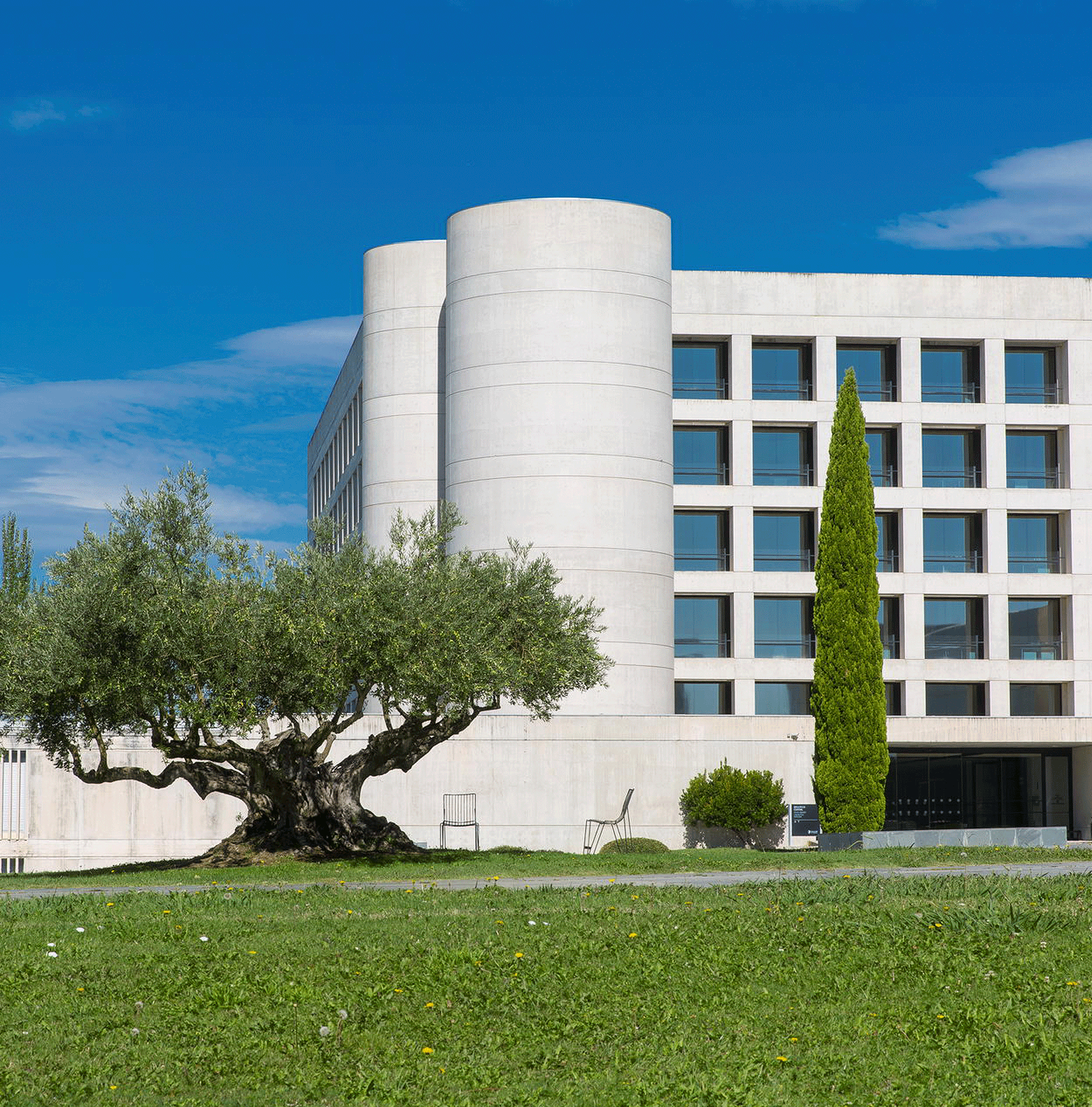
El Campus es un mundo abierto, dilatado, una realidad que se prolonga más allá de sus límites, un lugar de encuentro, amistas y vivencias comprtidas.
Aunque inspirado en el Palacio Real de Madrid, algunos detalles del Central, como los arcos y molduras que rematan sus dos alas, se inspiraron en las arquerías de los Nuevos Ministerios de Madrid, finalizados en 1942. A finales de la primera década del siglo XXI, se suprimió el tráfico rodado y se peatonalizó el conjunto de la plaza. Se plantaron variedad de arbustos y plantas que dan un vivo colorido al edificio a partir de la primavera.
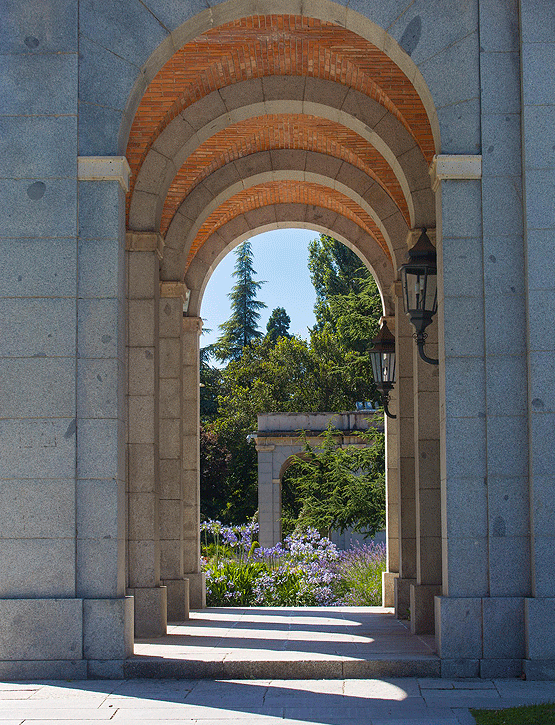
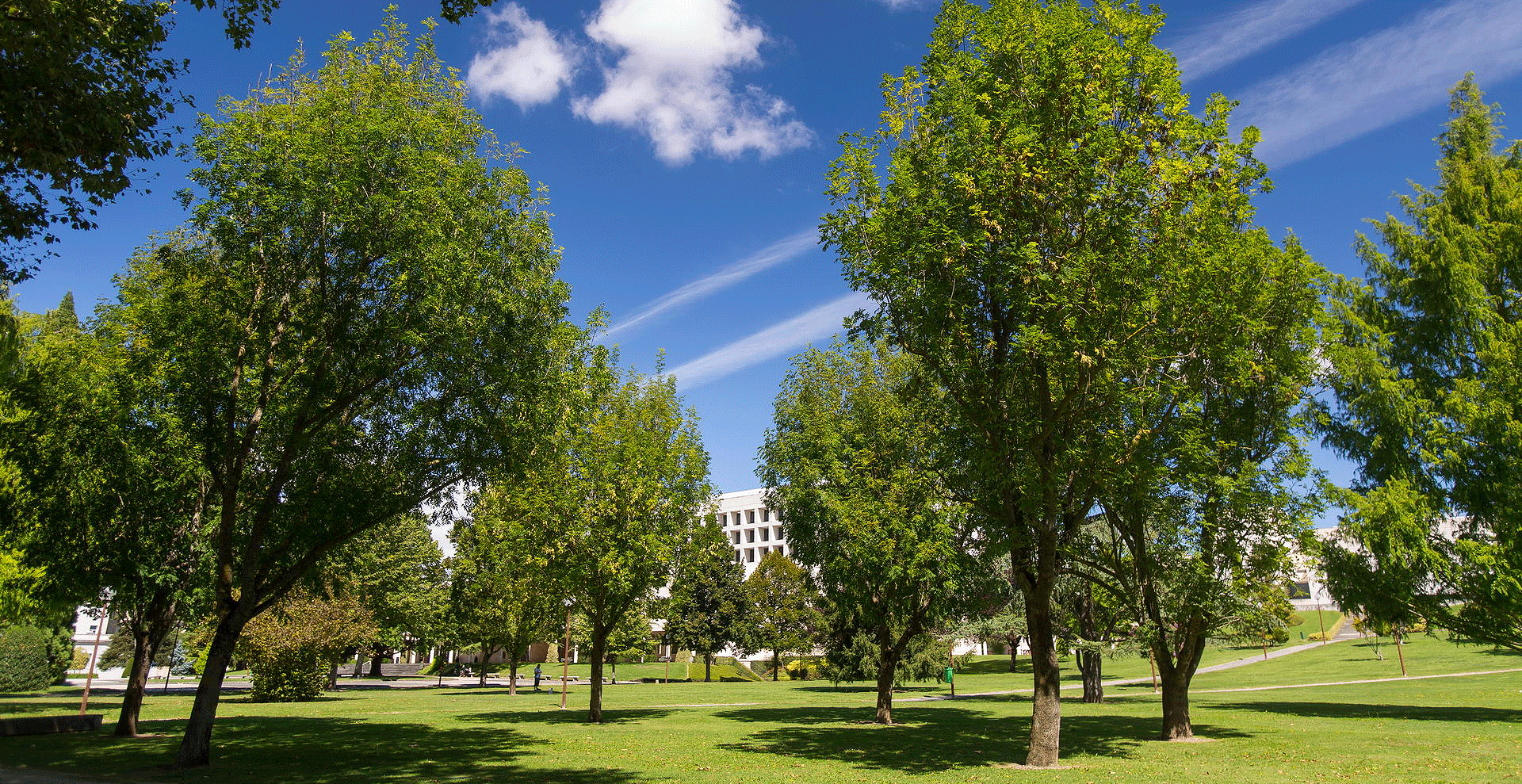
El Campus siempre ha ido avanzando en la medida que lo hacía la construcción de nuevos edificios, siguiendo un estilo paisajista, de líneas abiertas y profundas, con bosque, praderas y césped, característico de las universidades anglosajonas.
